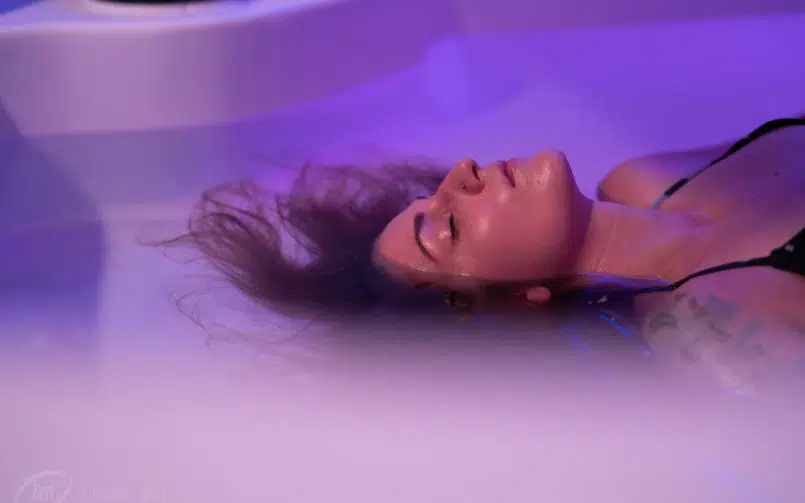The phrase “holistic therapy” might conjure many images in your mind. Maybe you imagine a yoga retreat, a steaming cup of herbal tea, or an hour-long acupuncture session. The beautiful thing about holistic therapy is that it can look very different for everyone, depending on what your body and mind need. So what exactly does holistic therapy mean, and more specifically, how is it defined?
What is holistic therapy?
To fully understand, we need to go back to around the 8th century B.C. The Greek word “Holos” means whole or entire. Therefore the term “holistic” is defined as “characterized by comprehension of the parts of something as intimately interconnected and explicable only by reference to the whole.”
Holistic therapies are typically considered a part of CAM (complementary and alternative medicines) used independently or combined with Western medicine. There are many different categories found in CAM, including:
- Traditional alternative medicine: Ayurveda, TCM (traditional Chinese medicine), acupuncture, naturopathy, homeopathy
- Diet – nutrition, supplements, herbal medicine
- Energy work – Qi gong, reiki
- Body/Touch – massage, yoga, tai chi, chiropractic medicine
- Mind – meditation, biofeedback, hypnosis
- Other – visualization, dance, art, music
Floatation therapy
One type of holistic therapy that’s gained recognition during the past few years for its incredible benefits is floatation therapy. This therapy falls under the mind and body categories of CAM due to its mental and physical benefits.
Also known as “sensory deprivation,” float therapy consists of floating in a pod filled with skin temperature water mixed with 1,000 pounds of Epsom salts. This therapy is also referred to as REST, which stands for “restricted environment stimulation technique.” Your body becomes buoyant in the water due to the high amount of salt present, and this takes the pressure of gravity off of your body, most noticeably your muscles and joints.
Benefits of Floatation Therapy
Besides being a relaxing and peaceful experience, floatation therapy is healing and improves your quality of life. Floatation Therapy is not as standard as other holistic therapies like yoga, meditation, massage, and acupuncture, but it can provide many of the same benefits as these popular healing modalities.
In the flotation tank, your body is in a low-gravity and quiet environment with no external stimuli. This allows your body to go into a deep state of relaxation. Physically, you may experience increased blood flow, improved immune system functioning, expedited healing of injuries, and easing of chronic pain. The Epsom salts in the tank also help draw out toxins and relax muscles.
The brain is constantly processing external stimuli and stressors, which can tax your mental health over time. A float therapy session gives your mind a much-needed break. Mentally, you will likely experience a significant reduction of stress, increased creativity, feelings of euphoria and positivity, and an improvement in sleep after floating.
Considering holistic therapy
In our modern society, humans are experiencing chronic fatigue, stress, and depression at unprecedented rates. We are also plagued with conditions that manifest from stress, such as ulcers, migraines, insomnia, and weakened immune systems. Our modern lifestyles take a toll on our bodies, yet our modern medicine can also do the same.
Western medicine often treats the symptom or a particular problem rather than the root of the problem. Medications, pills, invasive treatments, and steroids are commonplace in the world of Western medicine. These treatments may work temporarily and provide immediate relief, but over time, they become ineffective and cause unwanted side effects.
On the other hand, complementary and alternative medicines focus on getting to the root of the problem to achieve holistic, whole-body healing. Floatation therapy is just one example of a holistic, non-invasive, non-addictive, safe, and entirely natural experience supported by scientific research.
Holistic therapies view all body parts as integrated and interconnected, like a car, for example. If one part of the car is broken or missing, this will affect the other parts and systems in the vehicle over time. Rather than just fix the broken part of the car, it is essential to check in on other parts and systems to prevent further damage. We take our vehicles in for general maintenance to make sure it is functioning well and to prevent future malfunctions, and we need to do the same for our bodies. Rather than just go to the doctor when a problem arises, constant upkeep and self-care should prioritize our bodies.
Is holistic therapy and flotation therapy the right choice for me?
Over a third of Americans practice some holistic therapy, and for a good reason. Many people feel like Western medicine has failed to treat the body as a whole. Those who have experienced adverse side effects from Western medicine often seek alternative methods for healing the body. Most holistic therapies have very few side effects and can be safely practiced complementary to typical medicines and practices.
Floatation Therapy is one type of holistic therapy continuously proving to be a safe and effective treatment option as observed in clinical studies. Floating is not only a relaxing experience, but it can provide a plethora of physical and mental benefits. Those who attend regular float sessions find that the more they go, the greater and more profound the benefits are.
True REST has float therapy locations throughout the country, and we are ready to introduce you to this incredibly beneficial holistic therapy to begin your body’s natural healing process. Find a location near you to book your appointment for the ultimate healing experience.


